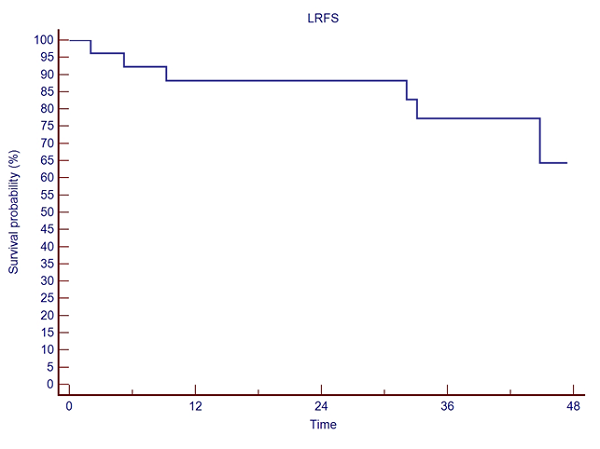Stereotactic body re-irradiation for bone metastases
PO-1596
Abstract
Stereotactic body re-irradiation for bone metastases
Authors: Laura Giannini1,2, Federica Ferrario1,2, Miriam Torrisi1,2, Chiara Chissotti1,2, Chiara Lucrezia Deantoni1, Sara Broggi3, Lucia Perna3, Claudio Fiorino3, Martina Midulla4,2, Stefano Lorenzo Villa1,2, Italo Dell'Oca1, Andrei Fodor1, Antonella Del Vecchio3, Stefano Arcangeli5,2, Nadia Gisella Di Muzio1,6
1IRCCS San Raffaele Scientific Institute, Department of Radiation Oncology, Milan, Italy; 2Università degli Studi di Milano Bicocca, School of Radiation Oncology, Milan, Italy; 3IRCCS San Raffaele Scientific Institute, Medical Physics, Milan, Italy; 4IRCCS San Raffaele Scientific Institute, Department of Radiation Oncology, Milan, Italy; 5San Gerardo Hospital, Department of Radiation Oncology, Monza, Italy; 6Vita-Salute San Raffaele University, School of Medicine and Surgery, Milan, Italy
Show Affiliations
Hide Affiliations
Purpose or Objective
The significant increase in survival of metastatic patients with target therapies has highlighted the problem of relapses of bone metastases treated with palliative and radical dosages. The aim of this study is to report our experience with the use of SBRT for the retreatment of bone metastases, evaluating efficacy and toxicity.
Material and Methods
In this retrospective study, 29 re-irradiations delivered between January 2018 and March 2021 in 25 pts with radiological evidence of bone relapse were analyzed. Metastatic sites were: one cervical spine, 6 thoracic spine, 12 lumbar spine, 2 sacrum, 6 hip, one rib and one skull. Previous RT on the same volume was performed with conventional external beam radiation therapy (cEBRT) for 24 treatments, and with SBRT for 5 treatments.
Median age was 72 (37-89) years at the time of the SBRT. Primary tumor was prostate in 18 pts, lung in 3 pts, breast in 2 pts, kidney in one patient and endometrium in one patient. Median interval from previous radical/palliative external beam RT was 63 (7-223) months.
SBRT was delivered with CyberKnife® (Accuray, Sunnyvale, CA, USA) real-time tracking radiation therapy. Median prescribed dose was 25 (12-30) Gy, to the median isodose of 80 (69-82)%, in 1-5 fractions.
Fifteen pts were treated with precautional steroid therapy at the time of re-RT.
Toxicity was assessed with CTCAE version 5.0.
Results
Median follow-up was 43.3 (0.0 – 53.7) months. No grade (G) ≥ 3 acute toxicity was observed. Two pts experienced G1 back pain; other two pts suffered from nausea, one G1 and the other G2. No late toxicity was observed.
Overall Survival (OS) at 12-, 24- and 36- months was 82.1%, 67.7% and 60.2% respectively.
Distant metastases free survival (DMFS) was 57.7% at 12 months, 44.4% at 24 months and 35.5% at 36 months.
Kaplan Meier estimates of local relapse free survival (LRFS) was 88.3% at 12 months, and 24 months, and 77.3% at 36 months (See Fig. 1).
Before treatment 8 pts were symptomatic, and after SBRT a complete pain response was observed in all of them.

Fig. 1: Local Relapse Free Survival after salvage stereotactic re-irradiation for bone relapses.
Conclusion
Stereotactic bone re-irradiation appears feasible, with low acute and late toxicity despite the proximity of organs at risk, in particular spinal cord for the spine metastases. Further studies are needed to confirm these results.